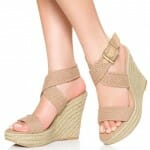Broken blood vessels, or telangiectasias, are a very common and typically non-threatening condition that can affect any part of the body. Telangiectasias can naturally arise at any time, however, individuals that have chronically exposed their skin to the sun or extreme temperatures may be more susceptible to telangiectasias.
For the majority of times, once a telangiectasia appears, it rarely if ever goes away on it’s own. Over time people may notice an increase in these broken blood vessels. Usually most people do not care if the telangiectasia appears on their arms, legs, or torso as it can be easily covered; however, once they become more apparent on the face and neck, then it becomes more of a cosmetic concern.
The typical treatment for telangiectasias at our centre involves the use of a laser called the V-Beam pulsed dye laser. This laser uses a specific wave length of light to destroy the hemoglobin in the red blood cell, which is predominantly what is seen in telangiectasia. The energy is absorbed by the hemoglobin and bursts the cell. Once the treatment is complete, the body reabsorbs the vessel. Because the laser is physically bursting the vessel, a bruise may become evident which can last for approximately 5-10 days.
The treatment is fairly quick and has relatively low pain associated with it. Most of our patients say that it is similar to a rubber band being snapped onto your skin. It is advisable that should you go for a V-beam pulsed dye laser treatment (or all lasers for that fact), it is important to do your best to avoid excessive sun exposure before and after the treatment for as long as possible.
For more information, please visit our facial vein page or please feel free to contact our clinic at (780)482-1414 and any of our friendly staff will be able to assist you.









